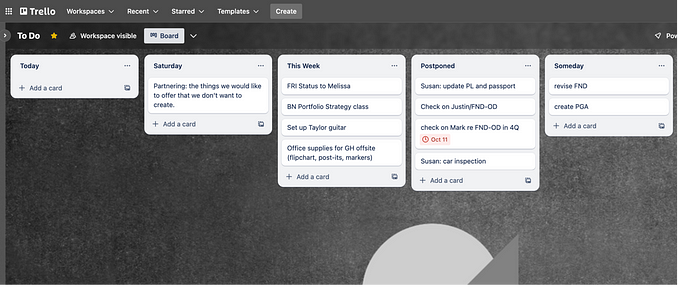Returning to Work and Hybrid Meeting Spaces

Is Hybrid the New Normal?
Discussions abound about the value of working from a corporate office versus working from home. Everyone has a personal story to tell.
I don’t miss my 90-minute commute
I like eating lunch with my family
I have a better office setup at home than at work
But also
· I miss seeing my co-workers
· Collaboration is so much better in person and more fun too
· (And for some, particularly in big cities) my office is nicer than my apartment
Meanwhile, companies continue to report that we’re returning to work — or we’re not — or maybe we will — but maybe it’ll be optional — and maybe we’ll have “meeting days.”
One friend’s company has completely shut down the corporate office and given up their lease but now they’re wondering if they should open a new but smaller office.
All you bosses who insist everyone will be forced back into their cubicles and workstations will soon find your staffers leaving you for good. — Steven J. Vaughan-Nichols, ComputerWorld
It’s time to re-think the fundamental purpose of the office.
Why do we have corporate offices?
Is it so employees can have access to equipment? In the old days, you had to go to the office to get basic equipment — computers, printers, good internet access. But we have all that at home (or we can get it easily).
Is it so managers can watch over workers? Knowledge workers such as product managers and developers and marketers don’t need supervision and micro-management.
“We’re convinced employees don’t need bosses. What they need is control over their work. We trust they will get their work done and do a great job without someone standing over them.” — Derrick Morton, FlowPlay CEO
The primary reason we have corporate offices is to have meetings.
Let’s all get in one room. We can share a whiteboard. We can see each other’s faces. We can grab a nearby colleague to join the discussion. We can collaborate.
In one company, the product team had 8 cubicles. One weekend, they reconfigured their cubicles into one large meeting space with a big cork board, a big white board, plus a big wall-mounted computer screen, and a conference table in the middle. They could check the status of anything and instantly hold a meeting without having to schedule a conference room. It was no surprise that they quickly became the most productive team in the company.
I had a wonderful training setup at one client. I arrived with my projector and all sorts of adapters and wires but didn’t need them. They had an Apple TV connected to a large monitor on a guest network. I was up and running in less than a minute, and we had a great session. The room was designed for purpose: presenting slides, particularly with an outside facilitator.
The more typical scenario in an onsite meeting is a small room with wires all over the table and floor. With an old VGA projector that sounds like a jet engine. That nobody knows how to get working. So we all wait around until the tech can come set things up.

Today’s corporate offices should be redesigned for meetings
I reluctantly traveled to a client’s office during the height of Covid only to find that half the people I went to see attended via video. When I talked to the people in the room, my back was to the camera. When I talked to the camera, my back was to the people in the room.
What a meeting room should provide is an environment for collaboration. Make it easy for a teacher to teach; make it comfortable for learners to learn; make it possible for all participants to collaborate.
Today’s offices should bring people together to collaborate on challenges and problems. We need more and larger meeting spaces — and we need to embrace remote participants in these meetings. We can increase meeting space by reducing the number of private offices. If you need to work alone, work from home.
WHAT: Corporate offices lack adequate meeting spaces and those that exist fail to accommodate remote participants.
WHO: Employees as well as outside guests, both local and remote.
WHY: Participants should benefit from meetings and training sessions regardless of how they attend the meeting.
Companies should bring together a cross-functional team to discuss the problem and brainstorm possible solutions. (In our Fundamentals class, we call this a discovery meeting).
One solution is to focus on the people in the room and let the remote people listen in. That’s what most companies do today. They try to accommodate the remote attendees as best they can — but the remote attendees are treated as observers, not participants. And this approach is disruptive. What is done casually in a live space isn’t as easy in a hybrid space. Instead of just drawing stuff on a whiteboard, you’ll need to do it in Miro or Mural so remote people can participate. This approach places much of the burden on the instructor or meeting leader.
Another solution would be to set up large screens and cameras at both the front and back of the meeting rooms. The screen in the front shows the presenter’s slides; the screen in the back has a gallery view of the remote participants as well as a camera focused on the presenter and participants. The speaker shares their slides to the big screen as well as via the conference software. There should be a microphone for the presenter and also a conference mic for those in the room.
I’m sure there are many possible approaches. The ideal design ultimately allows each meeting participant to learn from and collaborate with any other participant.
The key is to understand the problem you’re trying to solve. Don’t just tick off a list of features. (Zoom, Miro, webcam, microphone). Design a solution with the WHO and WHAT at the forefront.
I believe hybrid is the new normal — from now on, all corporate meetings will be hybrid: some people in the office, some people on video. We must create meeting spaces that work for those in the office as well as those who prefer to work at home.
Focus on the right problem and the right solutions become apparent.
Product management is about solving the right problem. Product design is about solving the problem right. Product teams need both to succeed.










